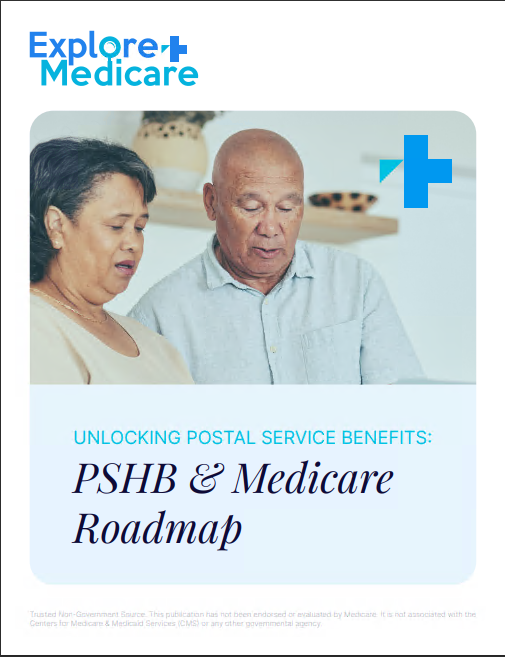Key Takeaways:
-
After submitting your Medicare application, you should monitor its status, prepare for potential delays, and be ready for additional documentation requests.
-
Once approved, review your coverage details, understand your costs, and plan for your healthcare needs to avoid unexpected expenses.
What Happens After You Submit Your Medicare Application?
So, you’ve sent in your Medicare application—what now? While it may seem like all you need to do is wait, there are several important steps to take to ensure your enrollment goes smoothly. Understanding the process and knowing what to expect can help you avoid delays, manage your healthcare coverage, and prepare for the costs that come with Medicare.
Checking the Status of Your Medicare Application
Your Medicare application isn’t instantly processed. The time it takes to receive a decision depends on how you applied and whether any additional information is needed. Typically, it can take two to four weeks for your application to be approved, but it might take longer if there are any issues.
How to Check Your Application Status
-
Online: If you applied through the Social Security Administration (SSA) website, you can check your application status by logging into your my Social Security account.
-
By Phone: You can call the SSA at 1-800-772-1213 to ask about the progress of your application.
-
In Person: Visiting a local Social Security office is another option if you prefer direct assistance.
Preparing for Possible Delays
Sometimes, applications take longer than expected. If the SSA requests additional information, responding quickly can help avoid further delays. Common reasons for slow processing include:
-
Missing or incorrect personal information (such as your birth date or Social Security number)
-
Incomplete application forms
-
Issues verifying work history or Medicare eligibility
If it’s been more than 30 days and you haven’t received any updates, follow up with the SSA to ensure everything is on track.
Receiving Your Medicare Approval and Card
Once your application is approved, you will receive a Medicare approval letter and your Medicare card in the mail. This usually happens within three weeks after approval. Your card will list your Medicare Beneficiary Identifier (MBI), the start date of your coverage, and the parts of Medicare you’re enrolled in.
What to Do When You Receive Your Medicare Card
-
Check the details carefully – Ensure your name and Medicare number are correct.
-
Store it safely – You’ll need this card whenever you visit a doctor or pharmacy.
-
Learn about your benefits – Read through the information provided with your card to understand what’s covered.
If you notice any errors or your card doesn’t arrive within four weeks, contact Medicare or the SSA for assistance.
Understanding Your Medicare Coverage
Now that you’re officially enrolled, it’s time to familiarize yourself with your Medicare benefits. Depending on what you applied for, you may be enrolled in:
-
Medicare Part A (Hospital Insurance) – Covers hospital stays, skilled nursing facility care, and some home healthcare.
-
Medicare Part B (Medical Insurance) – Covers doctor visits, outpatient care, preventive services, and durable medical equipment.
-
Medicare Part D (Prescription Drug Coverage) – Helps with the cost of prescription medications.
Each part comes with specific costs, including premiums, deductibles, and copayments. Reviewing your Medicare Summary Notice (MSN) will help you understand how much you’ll need to pay out-of-pocket.
What If You Need More Coverage?
If you find that Medicare Parts A and B don’t cover everything you need, you can explore additional coverage options during Medicare’s Annual Enrollment Period (AEP), which runs from October 15 to December 7 each year.
Managing Your Medicare Costs
Medicare isn’t free, and it’s important to budget for expenses related to premiums, deductibles, and out-of-pocket costs. Here’s what you should keep in mind:
-
Part A costs – Most people qualify for premium-free Part A, but if you have to pay, it could be several hundred dollars per month.
-
Part B premium – The standard 2025 premium is $185 per month, with an annual deductible of $257.
-
Part D costs – Monthly premiums vary by plan, and the maximum annual deductible is $590.
Understanding these costs ahead of time can help prevent financial surprises.
Setting Up Payments and Managing Your Medicare Account
To ensure continuous coverage, set up automatic payments for your Medicare Part B premium. If you’re receiving Social Security benefits, your Part B premium will be automatically deducted from your check. If not, you can pay using:
-
Medicare Easy Pay (automatic bank withdrawals)
-
Online bill payment through your Medicare account
-
Mailing a check or money order
It’s also a good idea to create a Medicare.gov account where you can:
-
Track your coverage
-
View claims and Medicare Summary Notices
-
Compare plans during Open Enrollment
Scheduling Your First Medicare-Covered Appointments
Now that you have coverage, it’s time to schedule your first Medicare-covered preventive visit, known as the “Welcome to Medicare” visit. This appointment is available within the first 12 months of enrolling in Part B and includes:
-
A health review
-
Personalized prevention plan
-
Vision, hearing, and depression screenings
This visit is a great opportunity to discuss your healthcare needs and ensure you’re making the most of your Medicare benefits.
Reviewing Your Coverage Annually
Medicare plans and costs can change each year, so reviewing your coverage annually is essential. Key times to do this include:
-
Medicare Open Enrollment (October 15 – December 7) – Review or change plans.
-
Medicare Advantage Open Enrollment (January 1 – March 31) – If you have Medicare Advantage, you can switch plans or return to Original Medicare.
Even if you’re happy with your current plan, checking for changes in premiums, deductibles, or drug formularies can help you avoid unexpected costs.
Making the Most of Your Medicare Benefits
Now that your Medicare coverage is in place, take full advantage of the benefits available to you. Some ways to maximize your coverage include:
-
Using preventive care – Medicare covers many preventive services, including cancer screenings, vaccinations, and wellness visits.
-
Exploring telehealth options – Many providers now offer virtual visits covered by Medicare.
-
Seeking financial assistance programs – If you have a limited income, you may qualify for Medicare Savings Programs or Extra Help to lower your costs.
By staying informed and proactive, you can make Medicare work for you and ensure you’re getting the healthcare you need without unnecessary stress.
Preparing for a Smooth Medicare Experience
Once you’ve submitted your Medicare application, your work isn’t done. Checking your application status, reviewing your coverage details, budgeting for costs, and scheduling your first medical appointments can help ensure a hassle-free experience. Medicare is a valuable resource, and by understanding how to manage it effectively, you can focus on your health and well-being.









